How to Accurately Read a Pressure Gauge
Introduction
Pressure gauges are ubiquitous instruments across numerous industries, from manufacturing and construction to healthcare and environmental monitoring. They serve as crucial indicators of the force exerted by a fluid or gas, providing essential data for safe and efficient operation. However, understanding and interpreting pressure gauge readings can be a challenge for those unfamiliar with these devices. This guide empowers readers with the knowledge and skills to confidently decipher pressure readings through a clear, step-by-step approach.
Understanding the gauge dial
The first step in reading a pressure gauge is familiarizing yourself with the gauge dial. Two key elements are crucial for accurate interpretation:
Major Units: These are the primary pressure increments marked on the dial. Common units include pounds per square inch (psi), bar, and kilopascals (kPa). Each unit represents the force exerted by a fluid or gas per unit of area. Identifying these units establishes a baseline for understanding the pressure range being measured. Major units are typically denoted by larger, more prominent lines or numbers on the dial.
Scale Range: pressure gauges typically have a marked scale spanning a specific pressure range, often indicated by minimum and maximum values. This range represents the pressure limits within which the gauge can accurately measure. Understanding the scale range is critical for interpreting readings that fall within or outside this range.
Pressure gauges are widely used in various industries, including manufacturing, construction, and healthcare. There are several different types of pressure gauges, each with its own unique design and application. Here's a breakdown of the most common types:
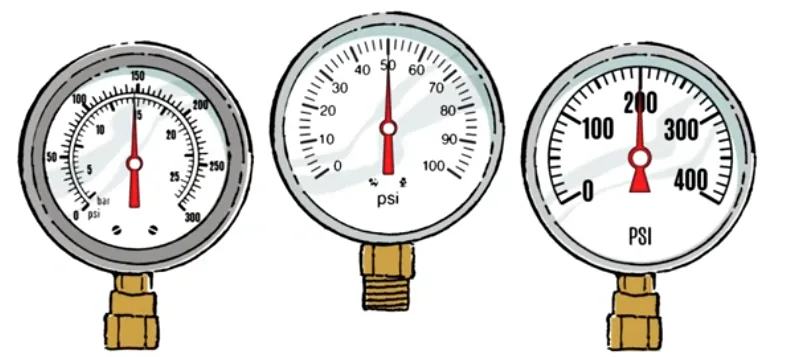
1. Bourdon Tube Pressure Gauge
The Bourdon tube pressure gauge is the most common type of pressure gauge. It utilizes a curved metal tube called a Bourdon tube that deflects in proportion to the pressure being measured. The deflection of the tube is then transferred to a pointer that moves across a dial, indicating the pressure.
2. Diaphragm Pressure Gauge
Diaphragm pressure gauges use a thin, flexible diaphragm to measure pressure. As pressure increases, the diaphragm deflects, which is then translated into a pressure reading on a dial or digital display. Diaphragm gauges are well-suited for measuring low pressure and are ideal for applications requiring high accuracy.
3. Bellows Pressure Gauge
Bellows pressure gauges employ a stack of corrugated metal capsules called bellows. As pressure increases, the bellows expand, and this movement is transmitted to a pointer or digital display to indicate pressure. Bellows gauges are suitable for measuring high or fluctuating pressure.
4. Digital Pressure Gauge
Digital pressure gauges utilize electronic sensors to convert pressure into an electrical signal. This signal is then displayed on a digital readout, providing a precise and easy-to-read pressure measurement. Digital gauges often offer additional features like data Logging and alarms.
5. Manometer
A manometer is a U-shaped tube partially filled with a liquid, typically mercury or water. The pressure being measured is applied to one side of the tube, while the other side remains open to atmospheric pressure. The difference in pressure causes the liquid level in the two sides of the tube to differ, and the height difference is then used to determine the pressure.
Step-by-Step Reading Process
Identify Major Units and Scale Range: Locate the major pressure units marked on the dial and determine the minimum and maximum values of the scale range.
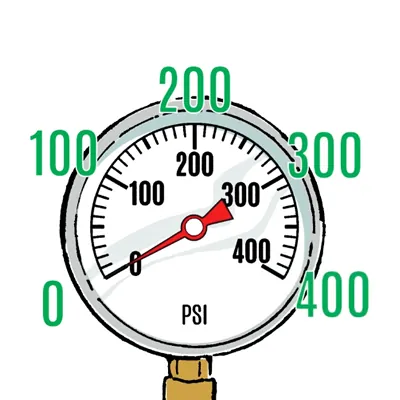
Find the Difference Between Major Units: Calculate the interval between the major unit markings. This difference represents the pressure change between each major unit increment.
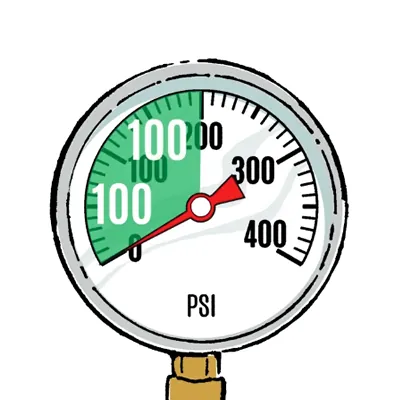
Count the Spaces Between Major Units: Determine the number of smaller divisions or spaces between two major unit markings. These smaller spaces represent finer increments of pressure measurement.
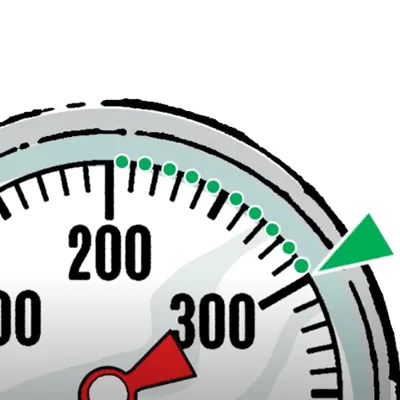
Determine the Pressure Represented by Each Space: Divide the difference between the major units by the number of smaller spaces between them. This calculation provides the specific pressure value that each minor division on the gauge corresponds to.
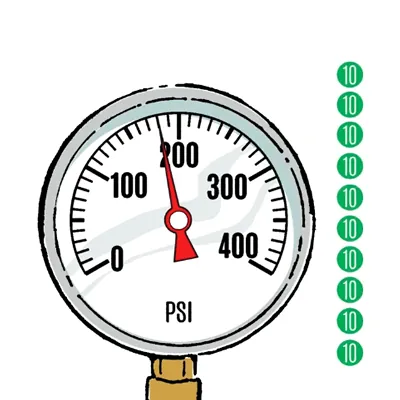
Example
Consider a pressure gauge with major units marked at every 20 psi (0, 20, 40, etc.), and there are 5 smaller spaces between each major unit.
Major Units: 0, 20, 40 psi, etc.
Scale Range: May be indicated elsewhere on the gauge (e.g., 0-100 psi).
Difference Between Major Units: 20 psi.
Spaces Between Major Units: 5 spaces.
Pressure per Space: 20 psi / 5 spaces = 4 psi per space.
Therefore, each smaller space on the gauge represents 4 psi. If the needle is pointing to the third smaller space past the 20 psi mark, the gauge is indicating a pressure of 32 psi (20 psi + 3 spaces * 4 psi/space).
Conclusion
Reading a pressure gauge accurately requires a clear understanding of the gauge's scale and its divisions. This step-by-step approach empowers you to interpret pressure readings with confidence. By following these steps and understanding the key elements of the gauge dial, you can ensure precise and reliable pressure measurements, fostering safety and efficiency in various applications.
Why Choose SAIVS™ as Your Supplier?
With 20 years of industry experience, SAIVS is a leading Chinese manufacturer of high-quality tools, offering competitive pricing and excellent customer service.We pride ourselves on exceptional quality control, extensive experience, and comprehensive after-sales service.